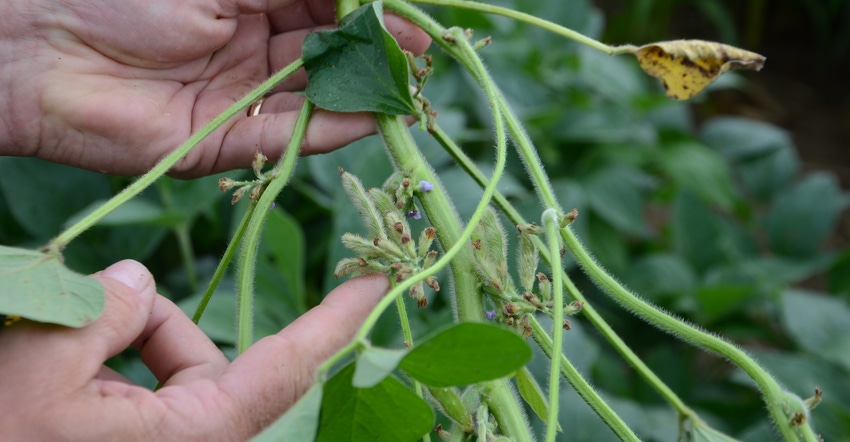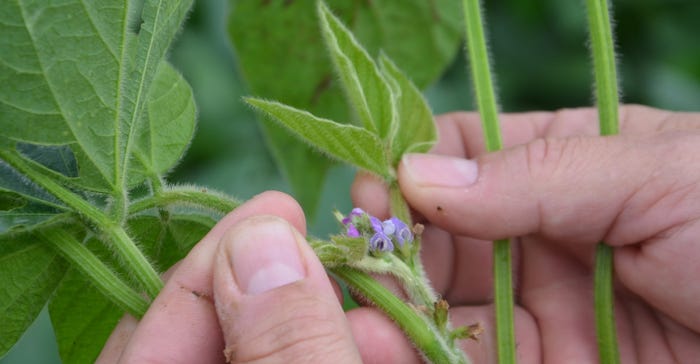
Steve Gauck has walked soybean fields for 25 years. He has seen the good, the bad and the ugly. It takes a lot to impress him these days.
“I was truly impressed when I pulled back the canopy and began seeing how many flowers and pods were forming per node in the Soybean Watch ’22 field,” says Gauck, a regional agronomy manager for Beck’s, based near Greensburg, Ind. Beck’s sponsors Soybean Watch ’22. He walked the field in early August.
“It was also impressive that these soybeans were still putting on new vegetative growth in the top of the plant,” he says. “New flowers were still coming out at the same time pods were forming lower in the canopy. It all points toward good yield potential if the rest of the season cooperates.”

Positive and negative factors
How high can yields go in this field? Here are additional pluses and minuses that may factor into the final yield tally:
Plus: Irrigation available. Natural rainfall is always best, but having irrigation available makes it less likely lack of moisture will be a major yield-limiting factor, Gauck says. The season has alternated between wet and dry spells in the area. If it turns dry again in early September, when soybeans are filling pods, irrigation will help provide needed moisture.
Plus: Soil moisture monitoring. The grower has help in making irrigation decisions. Thanks to Ceres Solutions, a probe measuring moisture in the soil profile was installed early in the growing season. Betsy Bower, a Ceres Solutions agronomist, monitors soil moisture on a regular basis, with information from the remote collection station available on an app on her computer.
In addition, information from a Watch Dog weather station provided by Spectrum Technologies provides instant readout on soil moisture at the 6-inch depth through an app.
Minus: Delayed planting due to wet spring. The field could not be planted until June 4. “That’s probably the biggest factor that will keep the field from reaching even higher yields,” Gauck says.
“Data collected in Beck’s Practical Farm Research work indicates that April- and May-planted soybeans simply have a bigger factory for photosynthesis and more infrastructure for piling on more beans,” he explains. “Earlier-planted soybeans tend to produce more nodes. The more nodes, the higher the yield potential.
“It helps that these later-planted soybeans are loading up on flowers and pods per node, but it still may not be enough to offset the fact that there are fewer nodes per plant than there might have been if soybeans could have been planted earlier.”
The other factor related to later planting is simply a shorter growing season, Gauck says.
“It’s all about capturing sunlight and turning it into plant products,” he adds. “If you’ve got more time to grow, you can produce more product. The difference may show up in bean size.”
About the Author(s)
You May Also Like




